The early 1900’s ushered in a new era for the sport of boxing as the old school bare-knuckle prize fights of the past were becoming nothing but a memory. Skilled boxing glove-clad fighters such as James Jeffries, Stanley Ketchel, Jack Johnson, Philadelphian Jack O’Brien, Abe Atell, Joe Gans, Sam Langford, and Harry Willis dominated the next twenty years. By the Roaring Twenties boxing was the pre-eminent sport in the United States and Jack Dempsey, heavyweight champion from 1919-1926, was as popular a celebrity as the country has ever seen.
The boxers of this early era took to the ring frequently and determining their final won-loss-tie records can be very confusing. Many states forbid ring judges from voting on the winner, so most bouts that did not end in a knockout or disqualification were given a “no-decision” – the big “ND.” As a way to combat this newspaper reporters often wrote about who they thought had won and this became an acceptable form of determining the winner of bouts that ended in an official draw. However, the so-called “newspaper decisions” did not factor in the changing of title belts. Many fights also went unrecorded so this further clouds the issue of determining a particular boxer’s actual record.
The town of Ellwood City, Pennsylvania, was no stranger to boxing and local promoters put on their share of boxing events. Early events took place at various locations to include the Opera House Hotel and the Shelby Gymnasium. The most renowned local boxer was undoubtedly Emmett Rocco, an Italian-American heavyweight who gained acclaim in the late 1920’s. Rocco, born as Carl Amadeus Rocco, was born in Ellwood City on December 18, 1906, one of seven children raised by Frank and Rosie Rocco. His parents were both born in Italy, immigrated to the United States, were married in Ellwood City in 1903, and soon took up residence at #921 Third Avenue. Emmett’s blue-collar father worked as a laborer in the National Tube Mill, while his mother stayed home to raise the children. Rocco attended the local schools and acquired the nickname Emmett – which stuck for the rest of his life – from one of his teachers.
After completing the eighth grade in the early 1920’s Emmett, a stocky lad at 5’11” in height, began working in the local factories. At some point be took up the sport of pugilism and later began taking some amateur bouts in the heavyweight division. It is believed that Octavius “Joe” Cumo, a boxing manager and promoter from New Castle, heard of Rocco and soon took him under his wing. Rocco’s first professional bout was against Ray Fay at The Palisades in McKeesport, Pennsylvania, on February 3, 1927. Rocco, at age twenty, won the six-round bout on points and went on to fight frequently throughout the rest of the year. Rocco was also helped by being able to train with some of New Castle’s best retired fighters, to include former middleweight champion George Chip and the well-traveled heavyweight Tom McMahon.
He won his next thirteen bouts at such locations to include Centennial Field in New Castle, Idora Park and Rayen-Wood Auditorium in Youngstown, and the Motor Square Garden in Pittsburgh. He suffered his first recorded loss during a twelve-round bout to Jack McAuliffe in Youngstown on November 29, 1927. In March 1928 his manager, who was ailing with heart illness at times, enlisted the help of Jimmy Dunn, a renowned boxing manager based out of Cleveland, to help train and push Rocco to new heights. Rocco, a skilled fighter known for being nimble on his feet despite his large frame, was dubbed the “Tarzan of the Connoquenessing.” Rocco was proud of his Italian heritage and the fact that he hailed from Ellwood City.
During the summer Rocco faced on one of his most memorable opponents, taking on former light heavyweight champion Battling Levinsky on two occasions. Levinsky, a frequent fighter with a career record of 196-54-37, is considered one of the greatest light heavyweight champions of all time. Rocco lost the initial bout held on Monday, June 6, 1928, in Akron, Ohio, in a ten-round “newspaper decision.” Their return bout three weeks later was the main event of the first ever card at the new Jolly Bowl in New Castle, an outdoor facility on Grant Street that was built by local promoter William E. Jolly. The bout went the distance but by all accounts Rocco won the contest in a convincing manner. Rocco continued his upward progression in the coming months with successful bouts against such worthy opponents as Al Friedman, Joe Sekyra, Frankie Wine, and Big Bill Hartwell.
Rocco had some big fights in the summer of 1929 when he was slated to fight Johnny Risko, the punishment-absorbing “Rubber Man” from Cleveland, and Otto von Porat, the popular Norwegian boxer who operated out of Chicago. Rocco won a newspaper decision against Risko in Cleveland on May 7 to start out strong. His big match on June 10 against von Porat at Chicago Stadium turned into disappointment, as Rocco held his own early but failed to answer the bell to start the eighth round. A return match against Risko in Cleveland on July 29 also ended in defeat after a twelve-round decision. Rocco quickly rebounded with some convincing victories and by the end of 1929 he was ranked as one of the leading contenders to the heavyweight title (although disputed) held by Jack Sharkey – which had been vacated upon the retirement of champion Gene Tunney the previous July.
Just as Rocco’s career seemed to be heading up it all started to unravel. In early January 1930 his close friend and manager Joe Cumo, who had been battling heart ailments for some time, passed away at the age of only twenty-eight. His death was a huge blow to the morale of Rocco, who continued boxing under the tutelage of different managers to include prominent Youngstown-based promoter Al Zill, local promoter and future New Castle councilman Joe Alexander, and his brother Ben Rocco. Various injuries, including a nagging hand injury originally sustained in 1928, also took a toll. Despite the difficulties one thing that Rocco remained was loyal to his family, often providing financial and other assistance to his parents and siblings. By all accounts Rocco was someone you could count on.
One of his most important bouts in 1930 took place in mid-October, when he defeated popular Australian pugilist “Tommy Gun” Heeney in Pittsburgh. But as 1930 came to a close it was evident Rocco would never get that coveted title shot. Beginning with a knockout loss to Arthur de Kuh in Wichita, Kansas, on January 28, 1931, Rocco went on to win only one bout during the year while suffering a total of eight defeats. His lone victory came in Pittsburgh in late April against King Levinsky, a Jewish-American heavyweight contender from Chicago. Levinsky, who would fight all the big names of the day to include Jack Dempsey, Max Baer, and Joe Louis, won a return bout the following month in Chicago.
A hard-training Rocco apparently wore himself out as this article in the November 20, 1931, edition of the New Castle News reads, “An examination by a doctor revealed that he was in need of a rest. He is under the full care of a physician until the first of the year when he expects to put on the gloves again. Rocco is having daily light workouts in his gym here and is keeping in constant physical condition so as to be partially prepared for his next contest which at present is not known.” Rocco did return to the ring on April 6, 1932, losing a ten-round decision to Pittsburgh area native George Panka.
The nagging hand injury forced him to take a long layoff. During that time he was married to the former Marguerite (Margaret) Biordi on Monday, July 25, 1932. Biordi’s family was well-to-do and owned the Majestic Theater in downtown Ellwood City from 1918-1924 and again from 1936 onward. Their wedding ceremony took place before a packed house at the Purification of the Blessed Virgin Mary Catholic Church in Ellwood City, with the Reverend Vincent Galiano officiating. After the service they visited at the homes of the both their parents, before leaving by automobile for a cross country honeymoon trip to California. They planned to make their new home in Los Angeles, where Rocco planned to undergo rigorous training as he prepared to return to the ring and also had an offer to help train blossoming actor Clark Gable. Rocco hoped to regain his boxing form to enable him to take on such stalwarts as Max Baer and Lee Ramage.
Rocco finally returned to the ring in April 1933 but suffered two convincing losses, a knockout and a technical knockout, in San Francisco and Pasadena, California. Not long after these bouts he reluctantly hung up the gloves and retired at the young age of twenty-six. During his six-year professional career he compiled a record – although accounts differ – of 32-25-2. His record is marred by finishing his career on a 2-11-2 stretch due to injuries.
In retirement he found employment as a laborer at a defense plant and a shipyard, worked in the trucking industry, and remained involved in boxing as a trainer and ringside official. Among those he helped train was his brother George, who became a successful amateur boxer in his own right. While out in California he suffered another setback as his father died back east in June 1934. In 1938 Marguerite gave birth to a baby girl named Emma Jean, the first of their three children. In mid-1939 they returned to Ellwood City for a time, where they lived at #308 Wayne Avenue and Emmett served as a desk sergeant with the Police Department. Rocco’s mother passed away in February 1940 and was buried next to her husband in St. Agatha’s Cemetery in Ellwood City. At some point in the early 1940’s the Rocco’s returned to Southern California where two other girls, Marlene and Susan, were born in 1943 and 1946 respectively. They took up residence at #4764 Alonzo Avenue in Encino.
Rocco, a caring husband and father, died rather unexpectedly of a heart attack on Tuesday, December 5, 1961. He was only fifty-four years old and his untimely passing came as a shock. He was buried in the prestigious San Fernando Mission Cemetery, a Catholic burial ground located in the Mission Hills section of Los Angeles. Among the notables interred there over the years include entertainer Bob Hope, musician Ritchie Valens, and actors Walter Brennan, Chuck Connors, and Eddie Arnold. A widowed Marguerite continued to live in California until her own death at the age of ninety-one on Sunday, February 2, 2003. She was buried next to her long-departed husband and their gravesite is flanked by those of actor William Bendix and old time director Roy Del Ruth.
Rocco was inducted into the Lawrence County Sports Hall of Fame in 1991 with a group that included Wampum High basketball star Coy Craine, New Castle High and Westminster College football player Larry Pugh, and Lincoln High football coach and all-around sporting enthusiast R. J. “Denny” Schill. Emmett Rocco, the good-natured Tarzan of the Connoquenessing, remains the most well-known and accomplished boxer to hail from rugged town of Ellwood City.
In September 2012 I asked Emmett’s daughter Susan Rocco Fernau of California for a personal comment about him and here is her wonderful reply, “What I remember most about my dad was his deep and abiding love for my mom, my sisters, and me. It was evident in everything he did throughout the remainder of his short life. We were his universe. I had just turned fifteen when he passed away so unexpectedly. Needless to say it was a personal shock that took a while for to get over. “Yes” time DOES heal all wounds. I was at such an impressionable age. Of the three girls in the family, I am the most like my dad in looks and personality. People would look at me and tell my mom — “Susan is just like Emmett.” What a lovely compliment!
As for my dad’s character — he had ton of it. He was kind, compassionate, protective, generous, smart, trustworthy, loyal, and very thoughtful. He had a wonderful sense of humor and could be mischievous if the spirit moved him. He also could be quick to anger if the occasion arose and when he felt it was warranted. He was the champion of the underdog. He never held a grudge and was a good friend to many in different social strata. All types of people were drawn to him. He was as comfortable with a ditch digger as he was with a celebrity or corporate titan. He loved people. All types. I guess you could say he had charisma.
In the final analysis dad was a simple man. He was deeply religious and spent much of his time fund raising for our parish church and the various parochial schools my sisters and I attended. I recall our parish priest was not initially impressed with my dad when he first transferred to our parish. The Monsignor was on the aloof and rigid side. It was not a problem for dad. He won the Monsignor over by just being Emmett. When my dad passed away it was the Monsignor who broke the news to my family and it was he who guided us through the challenging weeks that ensued. In honor of my dad — he celebrated a rare Solemn High Mass for the funeral. The church was packed with people from all walks of life. Many came from far away to attend both the rosary and funeral when they heard the news of dad’s passing. He was so full of life. It did not seem possible they thought. They were in shock, especially those that had just seen him two days before at Sunday Mass.
The Saturday before he passed away my dad and I put up all the Christmas decorations (inside and out), albeit a wee bit early even for Los Angeles. Normally, we waited until mid-December. With my dad’s passing mom wanted the decorations to come down. The Monsignor advised her to leave them as they were because he was sure it was my dad’s intent for his family to not miss celebrating a holiday that was so precious to him throughout the duration of his life. In hindsight I think my dad knew his time was up. Call it intuition.
Lastly, I will leave you with a comment he said often when asked about how such a macho fellow felt about living with four women – “Well, other than it sometimes feels like I live in a nylon jungle – I love looking at them and being with them. I am grateful I had beautiful girls. God forbid if I had sons that looked like me!”
What did I learn from my dad dying so early in my life? Well, never…. never…. hold back your love for the special people in your life. Tell them you love them all the time. Never assume you or they will be alive tomorrow. I also learned how to be strong and stand on my own two feet in life. I credit both my parents for that trait. No one knows what tomorrow will bring. I have been married for thirty-two years to a wonderful man (“Yes”—similar to my dad—but—not in the looks department). One day last fall he was fine and the next day he was airlifted to the ICU. Nothing will ever be the same again for the two of us. Carpe diem!” (EDITOR’S NOTE: Thanks Susan!)
 Emmett Rocco, an Ellwood City native of Italian descent, was a boxer who fought in the professional ranks between 1927-1933. He was a scrappy fighter who was deceptively quick for his stocky 5’-11” frame. He was a leading contender to the heavyweight championship in late 1929, but unfortunately his career was slowed and ultimately ended by several nagging injuries. (This and many of the photos on this page were generously provided by Rocco’s daughter – Susan M. Rocco Fernau. Thanks!) (c1929) Full Size |
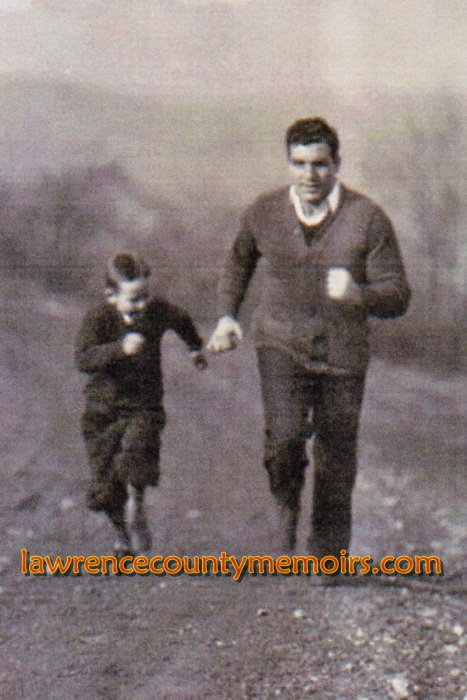 Rocco in training. (Susan Fernau photo) (c1928) | 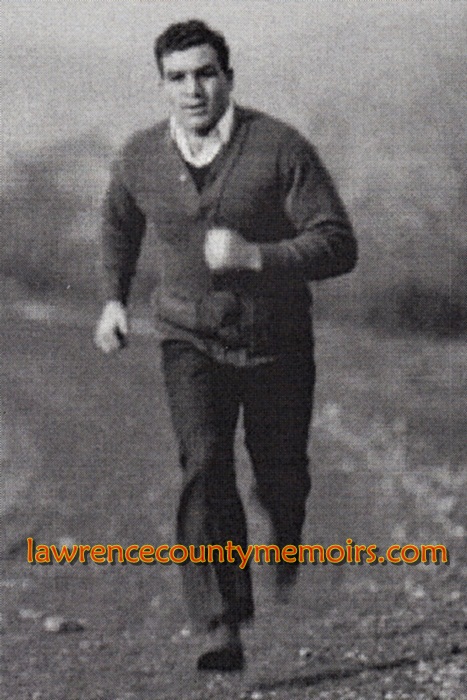 Another shot of Rocco in training. (Susan Fernau photo) (c1928) |
 Posing in his stylish robe. (Susan Fernau photo) (c1930) | 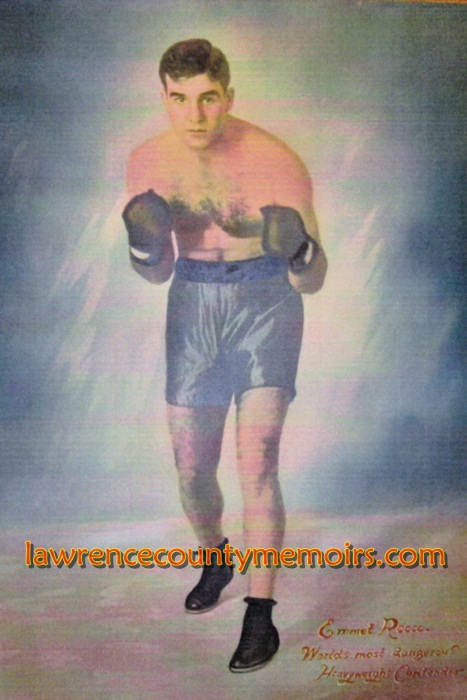 Rocco was known as the “Tarzan of the Connoquenessing.” (Susan Fernau photo) (c1931) |
 Rocco posing with his management team. His brothers Ben (on left) and Louis are seated. (Susan Fernau photo) (c1929) Full Size |
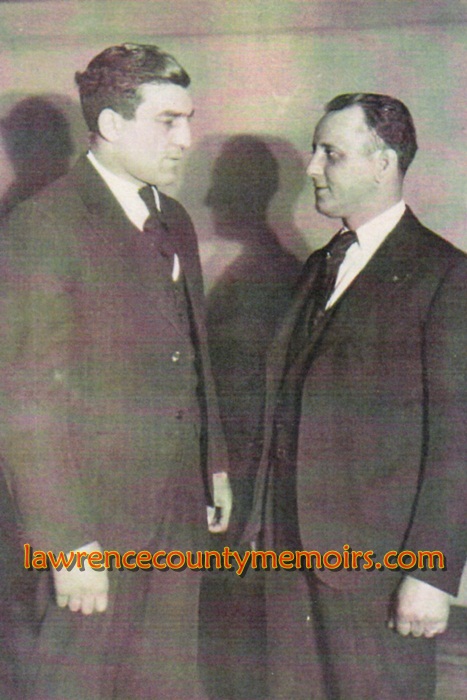 Rocco and manager Al Zill. (Susan Fernau photo) (c1931) |  Rocco, known for a heavy right jab, won his first fourteen pro fights. (Susan Fernau photo) (c1931) |
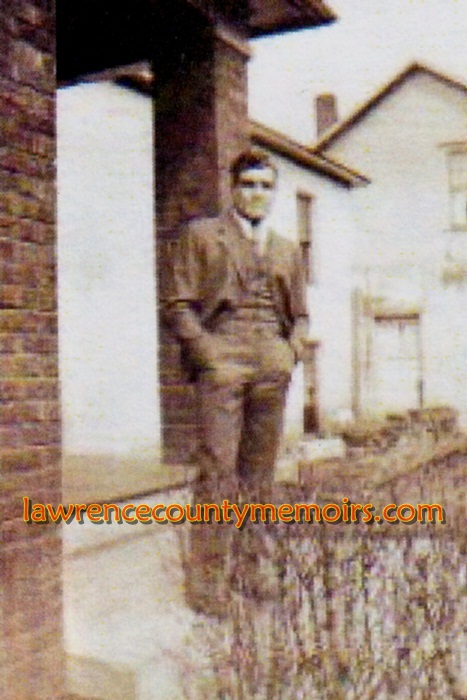 Rocco at the family home at #921 Third Street in Ellwood City. (Susan Fernau photo) (c1932) | 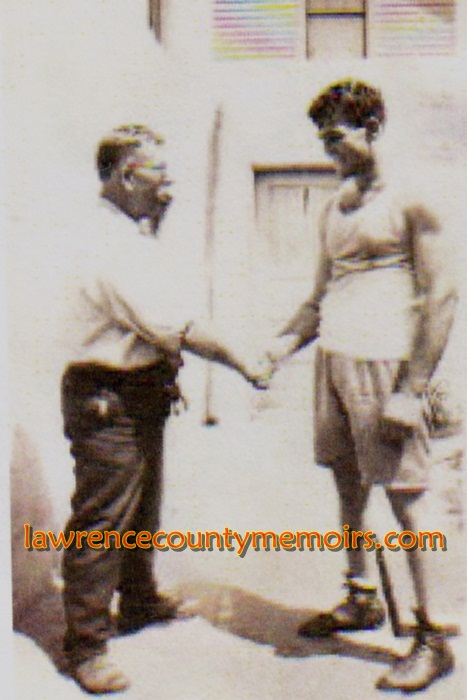 Emmett with his dad Frank Rocco in Ellwood City. (Susan Fernau photo) (c1930) |
 |
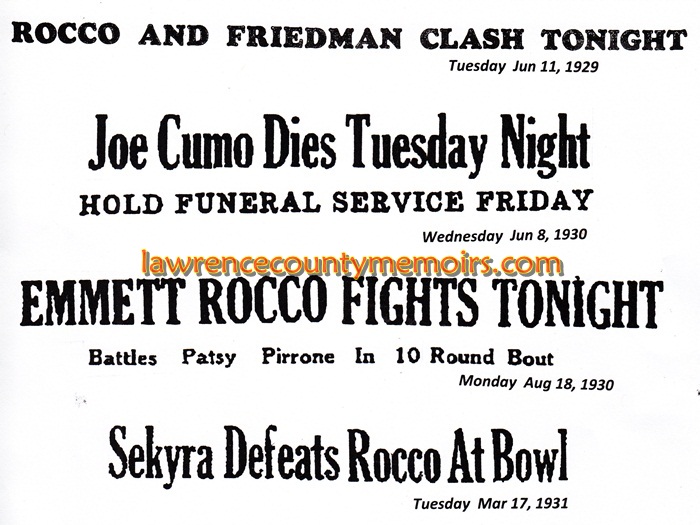 |
 On the set of The Untouchables, the ABC television series starring Robert Stack that ran from 1959-1963. Rocco is shown here with actors (from left) Nicholas Georgiade, Paul Picerni, and Abel Fernandez. (Susan Fernau photo) (c1960) Full Size |
 Rocco (in back) performs timekeeping duty during bouts held at the South Gate Arena in the Los Angeles area. (Susan Fernau photo) (c1948) Full Size |
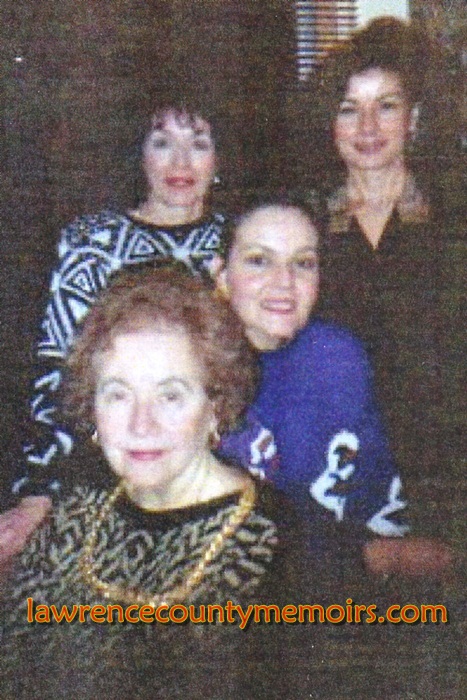 Marguerite, known to some as Margaret, later in life with her three grown up girls. (Susan Fernau photo) (c1995) | 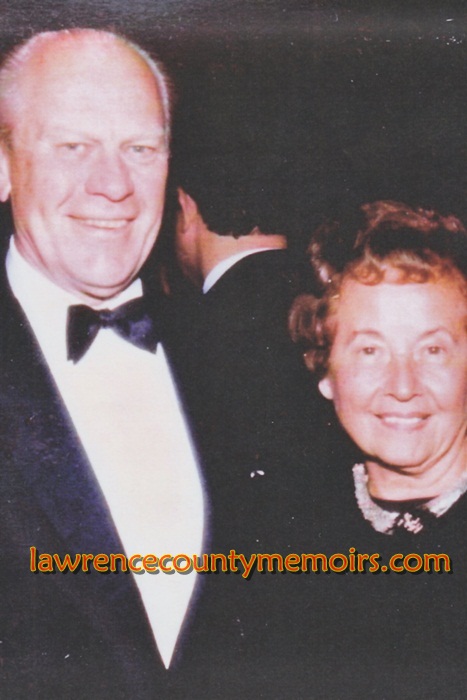 Marguerite with former U.S. President Gerald R. Ford. (Susan Fernau photo) (c1988) |




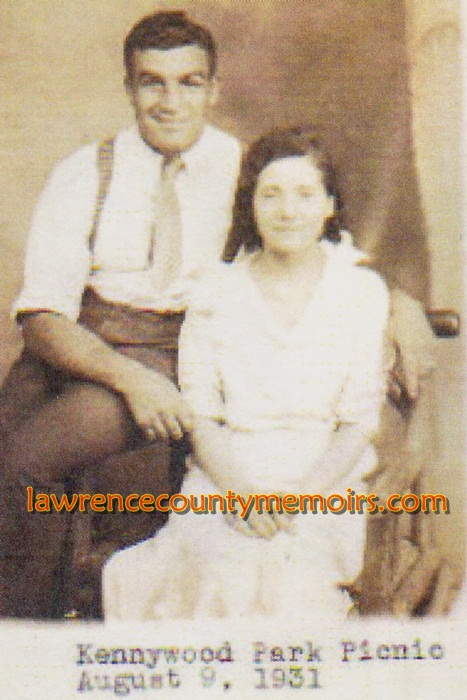
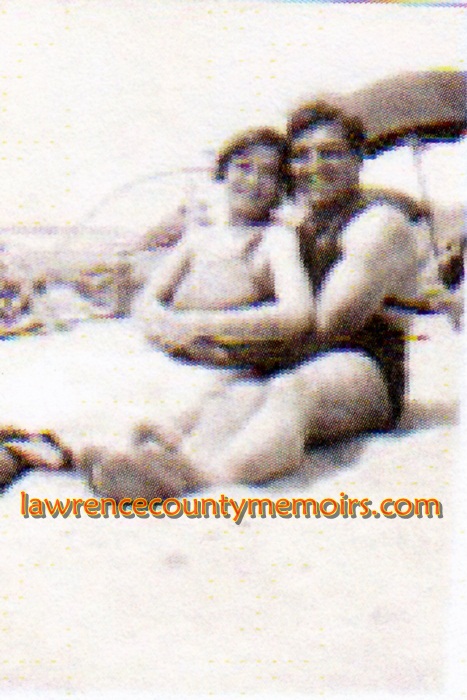

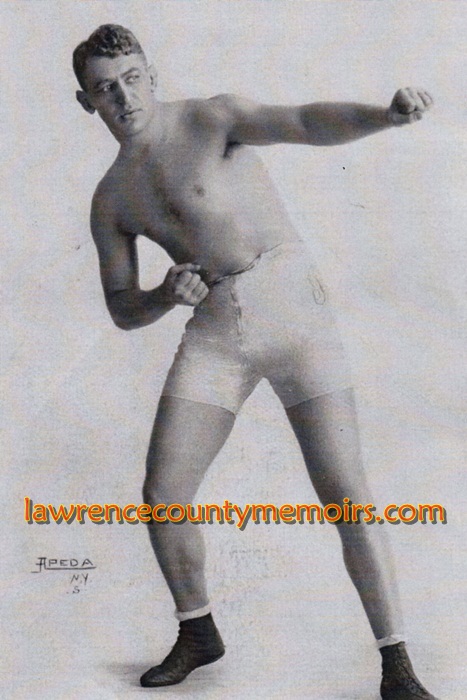


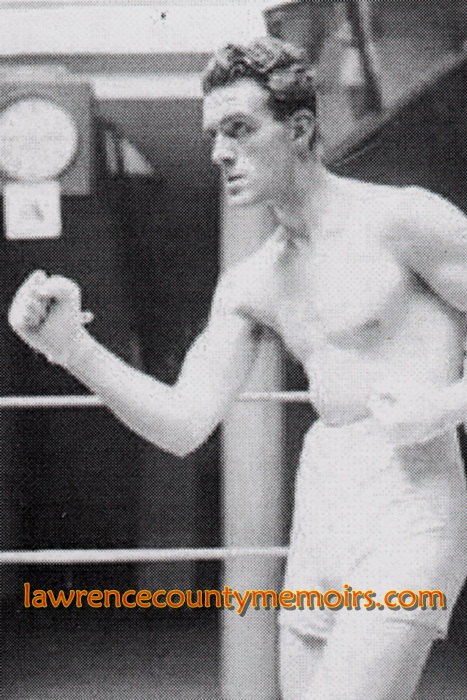
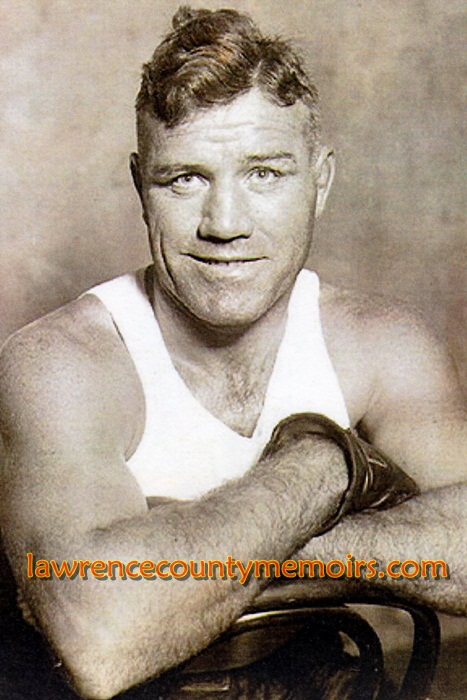
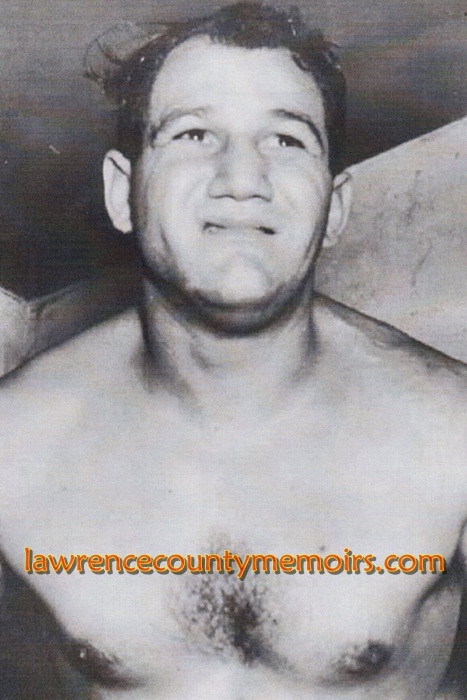
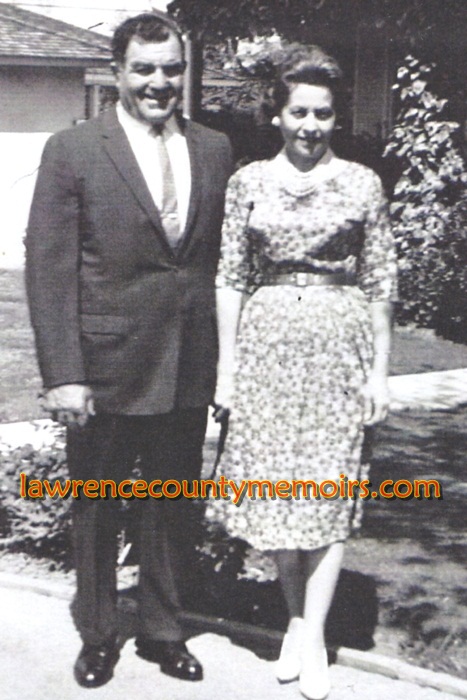
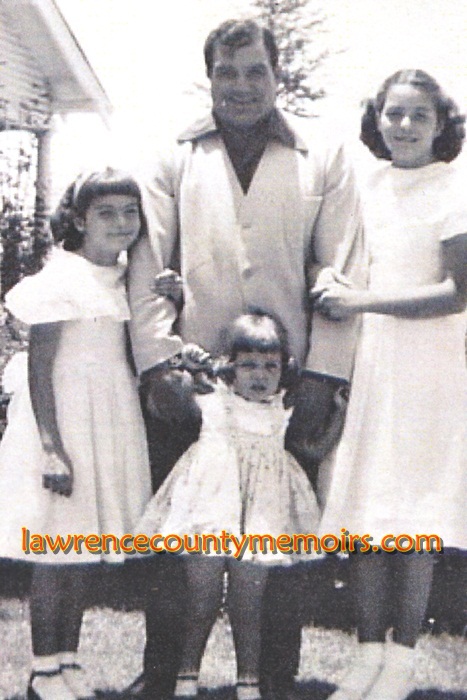

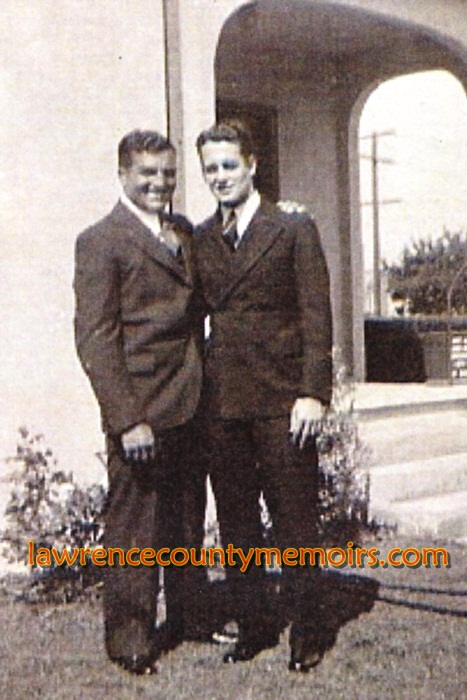
Comments
Michael Dando #
Very nice tribute, the write up and pictures i have never seen some of this before. I am a resident of Ohio, and went to the ceremony with other family members when Emmett Rocco was inducted into the hall of fame. Emmett Rocco was my Uncle,my Mothers Brother. I only met him once when i was about 9, they were visiting the family in Ellwood and us in Ohio. He passed away not long after the visit in i believe 1960.I don’t remember my three cousins as we have lost contact over the years. Again very nice tribute he deserves it. Thanks Mike
Kim Gray #
I never met my Great Uncle Emmett, he passed away before I was born. However, I heard so many wonderful stories about him! My Grandmother was his sister (my dad is Mike who also posted on this site.) I love learning about my uncle and this very interesting part of my family history. Thank you for posting these pictures and information. I hope there is more information out there. Thanks, Kim
*Does anyone know if any of his fights were recorded (audio or video?)
Rosina (Rocco) Foley #
What an informative page & a wonderful tribute to Uncle Emmett (my Dad’s brother). Great old photos… Dad was part of his management team and is pictured seated to the left (Ben Rocco). He was one of his trainers back then. Dad shared many stories with pride about Uncle Emmett “the champ.” I met him once, or so I’ve been told. I was probably only 2 or 3 years old. He will always be a Rocco family celebrity! <3
Louise Carroll #
Jeff— you are an excellent researcher and the pictures also tell a story. Bravo!
Marian Jo Nardone Brady #
What a wonderful tribute to a great family man and impressive boxer! My grandparents were John George and Carmel Rocco of 217 Fountain ave, Ellwood City, Pa. John George Rocco was Emmett’s cousin! I feel very privileged to be part of the Rooco family! My mother was Louise Virginia Rocco, my father is Evan Nardone from Koppel, Pa. What a wonderful heritage I have from both of my parents and grandparents! Thank you for sharing these great pictures and stories, I am delighted to have found them!
Marian Jo Nardone Brady #
Actually, I have found out that Emmett Rocco was my grandfather’s (John George Rocco) nephew, not cousin. Thank you.
Theresa Fernau #
Wonderful story about a wonderful and interesting family. Great job preserving your family history for a long time to come.
Donna Rocco jennings #
Wonderful article. My dad was christopher Michael Rocco. I have 3 older sisters, Gloria, Joan and joyce. Gloria has passed away. Love learning about the family.
Raymond Lee Rocco #
Hi, I’m Tammy Rocco, I’m just one out of the Raymond Lee Rocco and Juanita Ritter Rocco clan they are my parents, we lived on the corner of 4th street and Bell Ave. The Oasis Pub, Apartment Building with Francis Davis, my father was the one who knocked out the ape he fought. He went over to Ecuador with his brother Frank. He brought back the ocelot skin and shrunken head. Please call me 941- 249-2392, would love to hear more
Comment